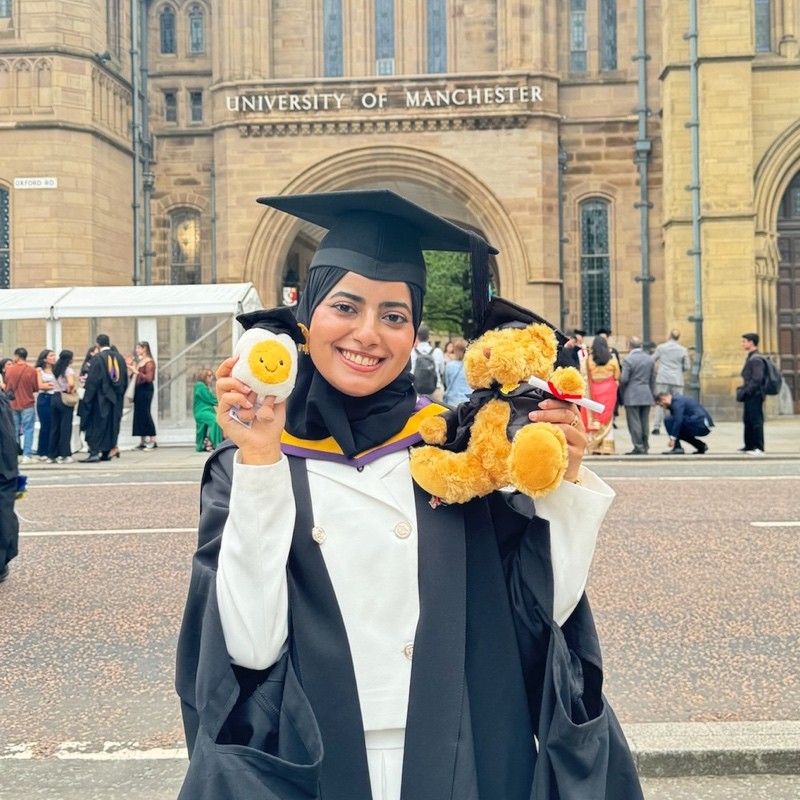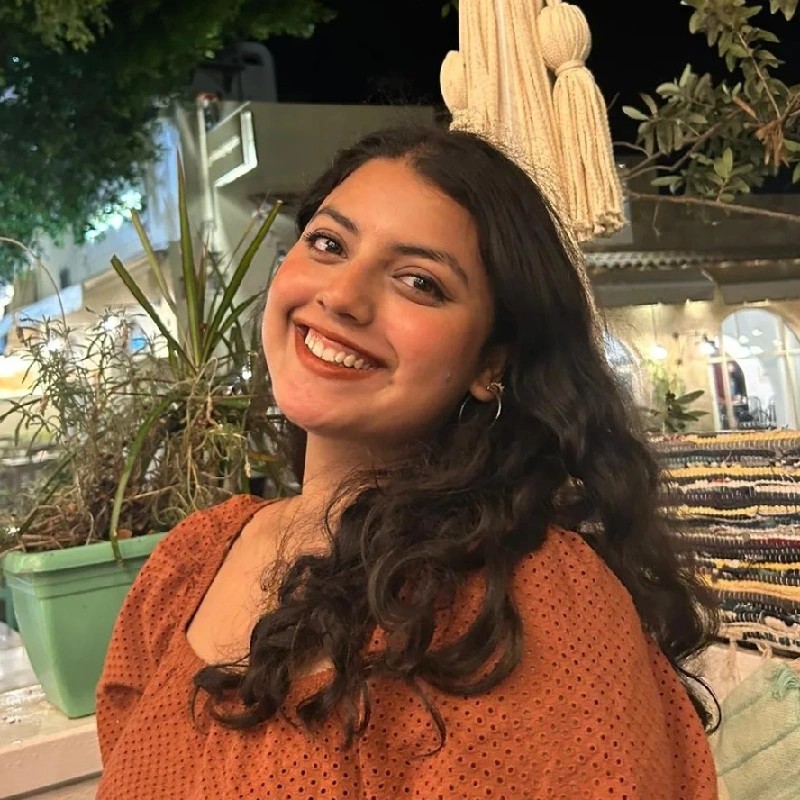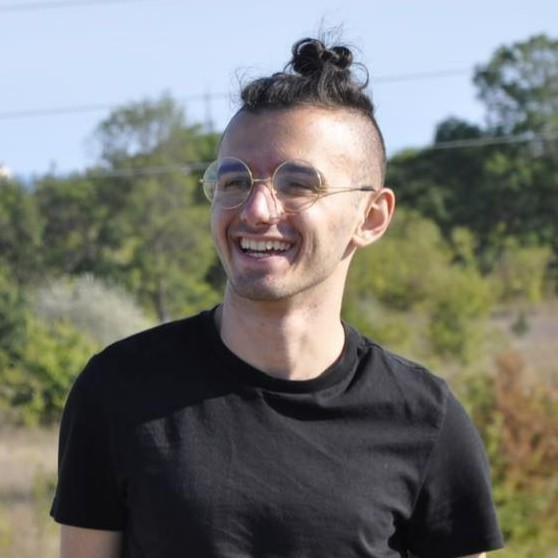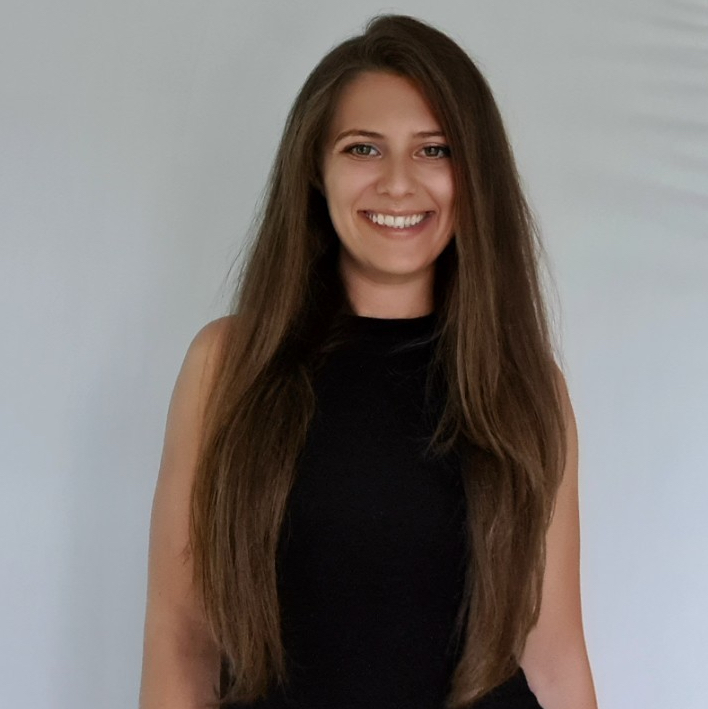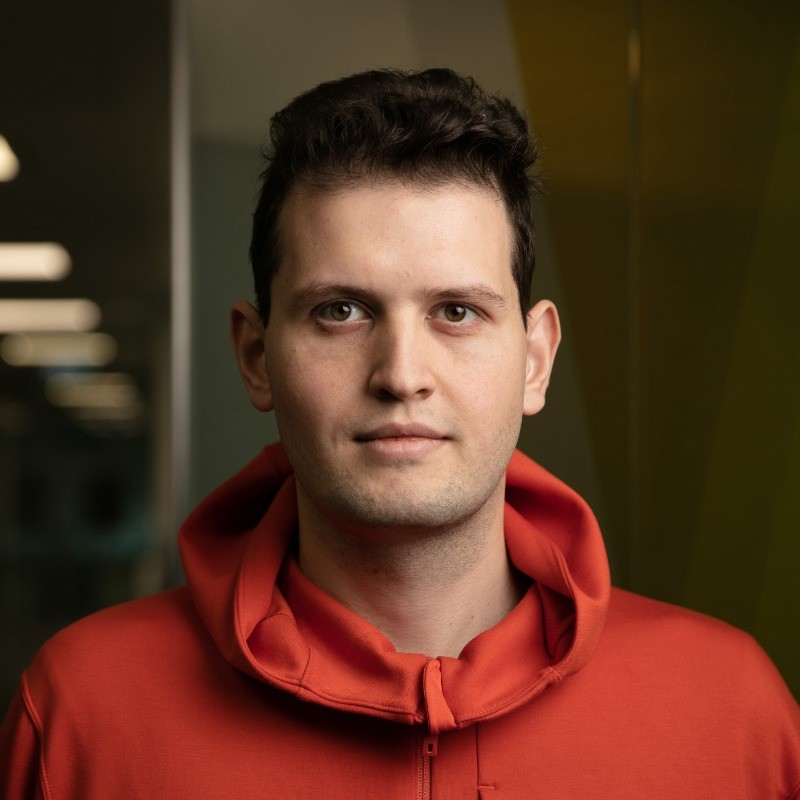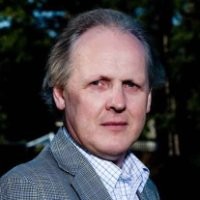28 Hearing Your Future
Hearing Your Future is the Coding Your Future podcast which accompanies this guidebook. We talk to graduands and graduates of computer science, to hear more about their journey from student to professional, see figure 28.1. As part of their exit interview we ask them what happens after graduation? What comes next?
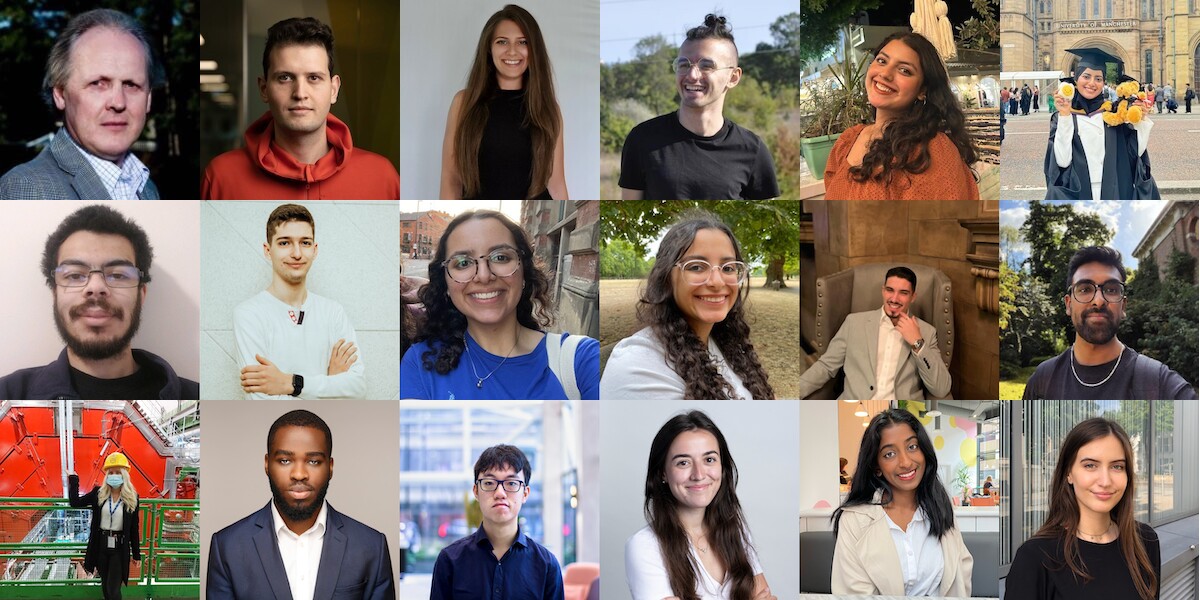
Figure 28.1: Collage of Computer Scientist portraits re-used from LinkedIn and Github with permission. From left to right, top to bottom: thanks Steve (chapter 37), Cristian (chapter 36), Stefania (chapter 35), Bozhidar (chapter 34), Eman (chapter 33), Asma (chapter 32), Jonathan (chapter 44), Ivo (chapter 42), Ingy (chapter 41), Nadine (chapter 40), Pedro (chapter 39), Amish (chapter 38), Raluca (chapter 49), Jason (chapter 48), Brian (chapter 47), Carmen (chapter 45), Sneha (chapter 46) and Alice (chapter 43). 🙏
28.1 From student to professional
Listen in to the episodes below, or read the transcripts, to find out more about how these students are coding their future:
- What’s their story?
- How did they get to where they are?
- What obstacles have they faced and how did they overcome them?
- What advice would they offer to their former selves and fellow students?
- Where are they planning to go next?
Find out more by listening here or subscribing wherever you get your podcasts.
Your future is bright, your future needs hearing, so let’s start hearing your future.
28.2 Subscribing to your future
You can subscribe (for free!) by following one of the links below to your favourite podcast tool. Alternatively you can search for Coding Your Future or Hearing Your Future in your podcast application. You will see the logo shown in figure 28.2 when you find it.
- Apple: apple.co/3JFV5Qe
- Spotify: open.spotify.com/show/30p4f1iI8hICkJJmey1bS1
- YouTube: youtube.com/@coding-your-future/podcasts
- Amazon: amzn.to/3OOaS0G
- Deezer: deezer.com/en/show/3839607
- Libsyn: codingyourfuture.libsyn.com
If all else fails, you can cut-and-paste the raw rss feed URL below into the relevant settings on your podcast app:
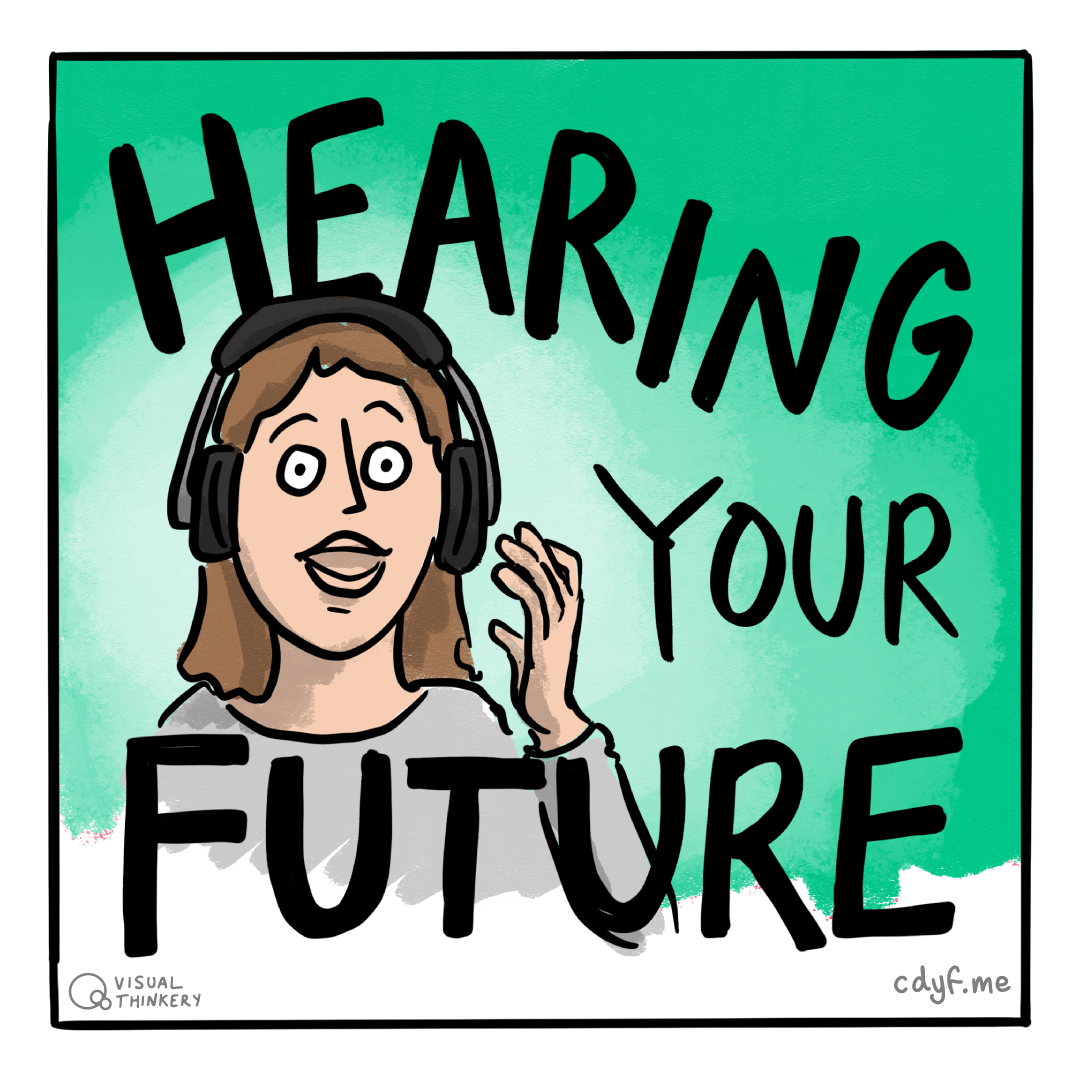


Figure 28.2: Hearing your future is the Coding your Future podcast. Subscribe and listen wherever you get your podcasts, see section 28.2. Hearing sketch by Visual Thinkery is licensed under CC-BY-ND
If you’d like to be a guest on the show, see section 28.24.
28.3 Episode 21: Muna Hassan on Couchbase and Lloyds Banking Group
Meet Muna Hassan, see figure 28.3 and the transcript and show notes in chapter 29.
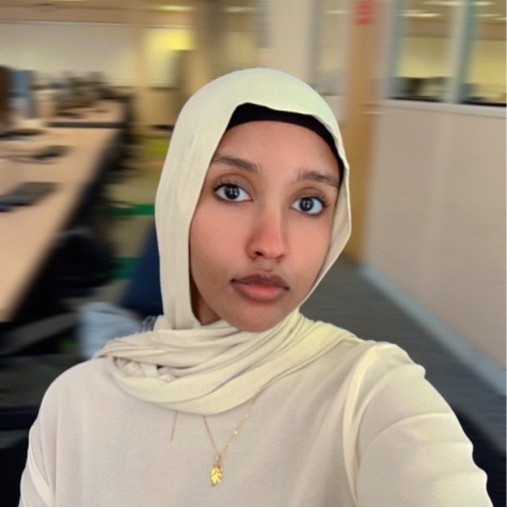


Figure 28.3: Muna Hassan. Picture re-used from LinkedIn with permission, thanks Muna. 🙏
Listen to the episode by clicking Play ▶️ below, or subscribe wherever you get your podcasts, see section 28.2.
28.4 Episode 20: Sambbhav Khare on Atmos International and graduate visas
Meet Sambbhav Khare, see figure 28.4 and the transcript and show notes in chapter 30.
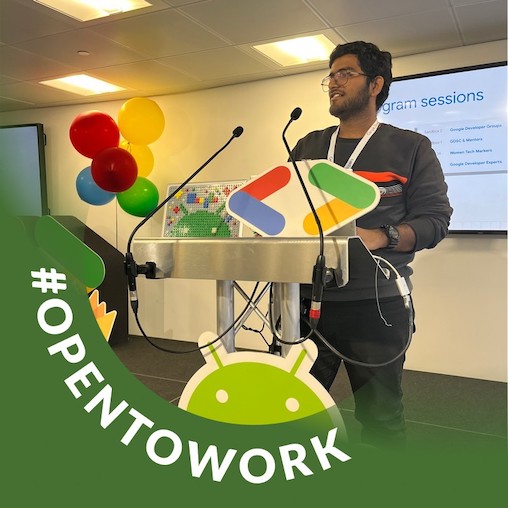


Figure 28.4: Sambbhav Khare linkedin.com/in/khare-sambbhav. Picture re-used from LinkedIn with permission, thanks Sambbhav. 🙏
Listen to the episode by clicking Play ▶️ below, or subscribe wherever you get your podcasts, see section 28.2.
28.5 Episode 19: Minahil Tariq on AWS and UNICS
Meet Minahil Tariq, see figure 28.5 and the transcript and show notes in chapter 31.
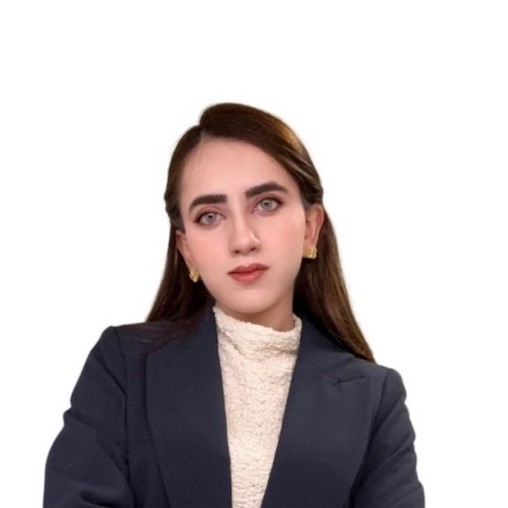


Figure 28.5: Minahil Tariq linkedin.com/in/minahil-h-tariq. Picture re-used from LinkedIn with permission, thanks Minahil. 🙏
Listen to the episode by clicking Play ▶️ below, or subscribe wherever you get your podcasts, see section 28.2.
28.6 Episode 18: Asma Alshebli on AD Ports Group and UNICS
Meet Asma Alshebli, see figure 28.6 and the transcript and show notes in chapter 32.
Listen to the episode by clicking Play ▶️ below, or subscribe wherever you get your podcasts, see section 28.2.
28.7 Episode 17: Eman Ahsan on Bentley Motors
Meet Eman Ahsan, see figure 28.7 and the transcript and show notes in chapter 33.
Listen to the episode by clicking Play ▶️ below, or subscribe wherever you get your podcasts, see section 28.2.
28.8 Episode 16: Bozhidar Klouchek on Oslo, Cantarus, Imago & Recourse
Meet Bozhidar Klouchek, see figure 28.8 and the transcript and show notes in chapter 34.
Listen to the episode by clicking Play ▶️ below, or subscribe wherever you get your podcasts, see section 28.2.
28.9 Episode 15: Stefania Chaplin on gitlab.com and devstefops.com
Meet Stefania Chaplin, see figure 28.9 and the transcript and show notes in chapter 35.
Listen to the episode by clicking Play ▶️ below, or subscribe wherever you get your podcasts, see section 28.2.
28.10 Episode 14: Cristian Bodnar on Improbable Worlds, PhDs and Microsoft
Meet Cristian Bodnar, see figure 28.10 and the transcript and show notes in chapter 36.
Listen to the episode by clicking Play ▶️ below, or subscribe wherever you get your podcasts, see section 28.2.
28.11 Episode 13: Steve Furber on Acorn Computers, and the Universities of Cambridge and Manchester
Meet Steve Furber, see figure 28.11 and the transcript and show notes in chapter 37.
Listen to the episode by clicking Play ▶️ below, or subscribe wherever you get your podcasts, see section 28.2.
28.12 Episode 12: Amish Shah on Imago, Bloomberg and Palantir
Meet Amish Shah, see figure 28.12 and the transcript and show notes in chapter 38.
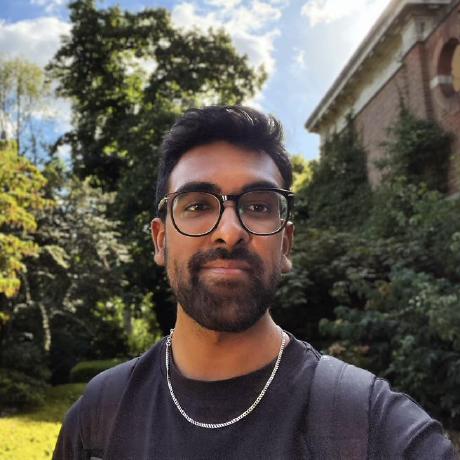


Figure 28.12: Amish Shah linkedin.com/in/amish-shah. Picture re-used from github profile shown in figure 11.14 with permission, thanks Amish.
Listen to the episode by clicking Play ▶️ below, or subscribe wherever you get your podcasts, see section 28.2.
28.13 Episode 11: Pedro on startups, Nomura and Amazon Web Services
Meet Pedro Sousa, see figure 28.13 and the transcript and show notes in chapter 39.
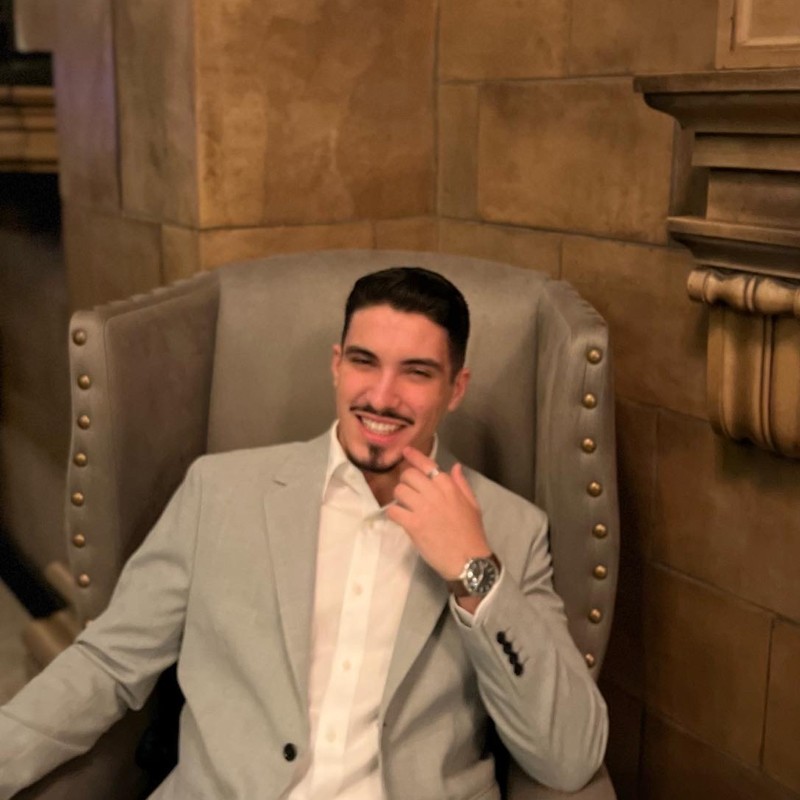


Figure 28.13: Pedro Marques Sousa. Picture reused from linkedin.com/in/pedro-marques-sousa with permission, thanks Pedro.
Listen to the episode by clicking Play ▶️ below, or subscribe wherever you get your podcasts, see section 28.2.
28.14 Episode 10: Nadine Abdelhalim on Imago and Arm
Meet Nadine Abdelhalim, see figure 28.14 and the transcript and show notes in chapter 40.
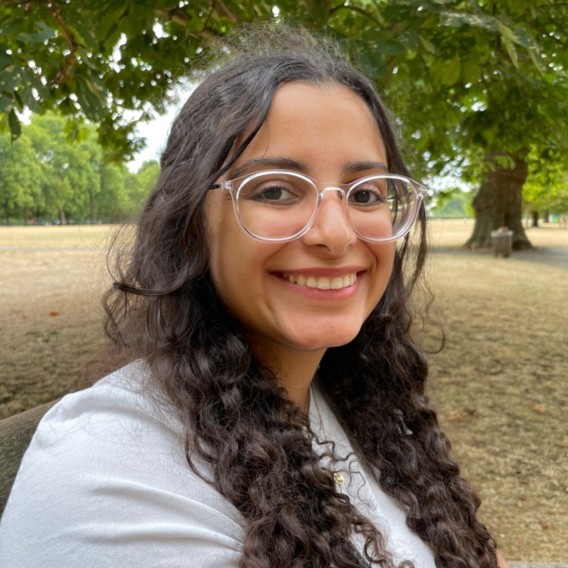


Figure 28.14: Nadine Abdelhalim. Picture reused from linkedin.com/in/nadineabdelhalim with permission, thanks Nadine.
Listen to the episode by clicking Play ▶️ below, or subscribe wherever you get your podcasts, see section 28.2.
28.15 Episode 9: Ingy Abdelhalim on IN3, Imago and McKinsey
Meet Ingy Abdelhalim, see figure 28.15 and the transcript and show notes in chapter 41.
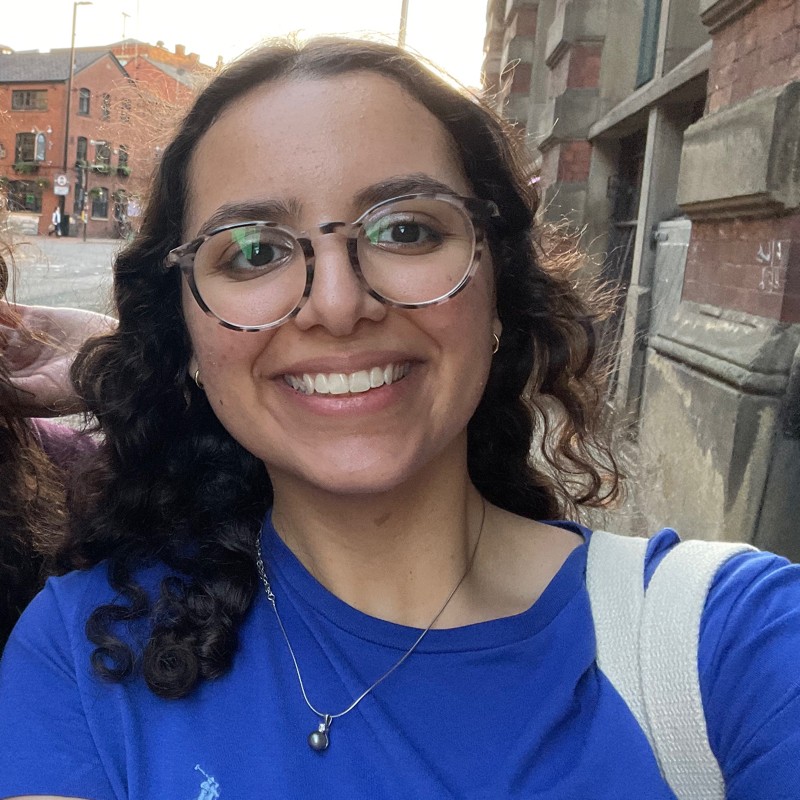


Figure 28.15: Ingy Yasser. Picture reused from linkedin.com/in/ingyyasser with permission, thanks Ingy.
Listen to the episode by clicking Play ▶️ below, or subscribe wherever you get your podcasts, see section 28.2.
28.16 Episode 8: Ivaylo (Ivo) Iliev on Amazon Web Services
Meet Ivaylo (Ivo) Iliev, see figure 28.16 and the transcript and show notes in chapter 42.
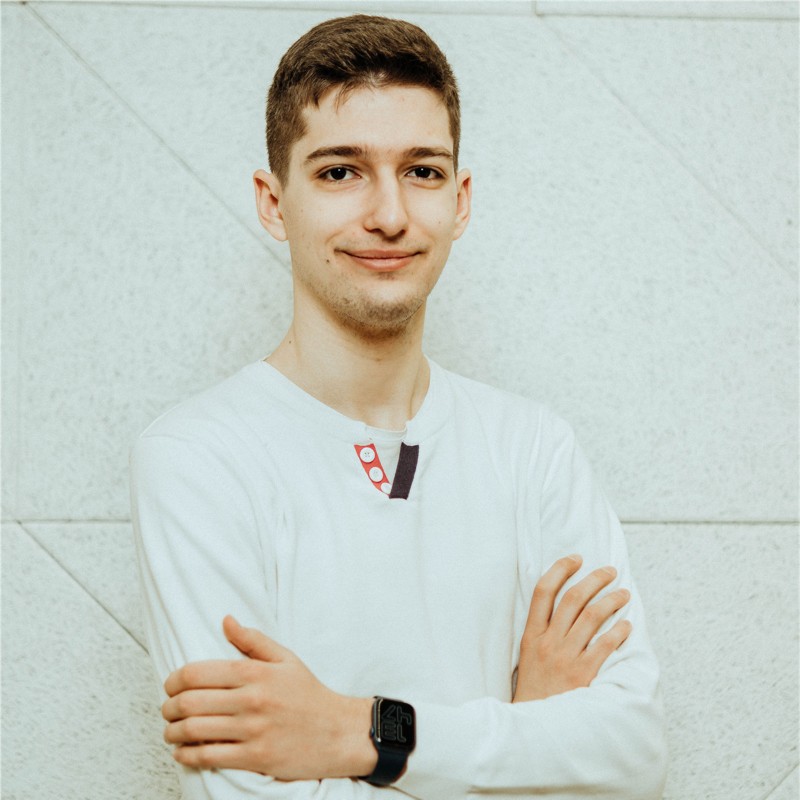


Figure 28.16: Ivaylo Iliev. Picture reused from linkedin.com/in/ivaylo-iliev3 with permission, thanks Ivo.
Listen to the episode by clicking Play ▶️ below, or subscribe wherever you get your podcasts, see section 28.2.
28.17 Episode 7: Jonathan Cowling on moneysupermarket and Infinity Works
Meet Jonathan Cowling, see figure 28.17 and the transcript and show notes in chapter 44.
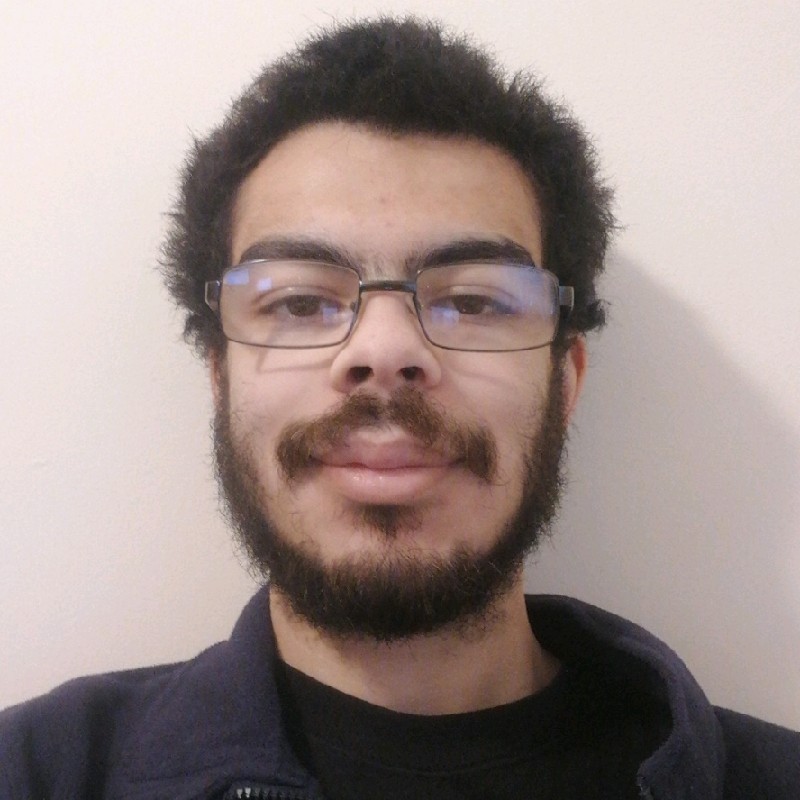


Figure 28.17: Jonathan Cowling. Picture reused from linkedin.com/in/jonathan-cowling with permission, thanks Jonathan.
Listen to the episode by clicking Play ▶️ below, or subscribe wherever you get your podcasts, see section 28.2.
28.18 Episode 6: Alice Păcuraru on Barclays, THG and Publicis Sapient
Meet Alexandra (Alice) Păcuraru, see figure 28.18 and the transcript and show notes in chapter 43.
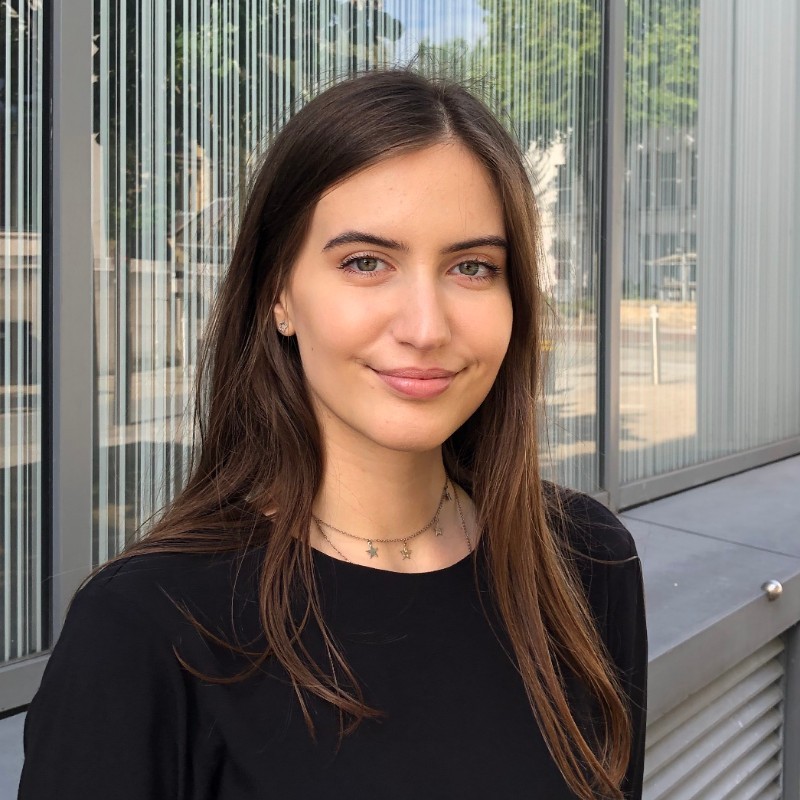


Figure 28.18: Alice Păcuraru. Picture reused from linkedin.com/in/alexandra-pacuraru with permission, thanks Alice.
Listen to the episode by clicking Play ▶️ below, or subscribe wherever you get your podcasts, see section 28.2.
28.19 Episode 5: Sneha Kandane on Matillion
Meet Sneha Kandane, see figure 28.19 and the transcript and show notes in chapter 46.
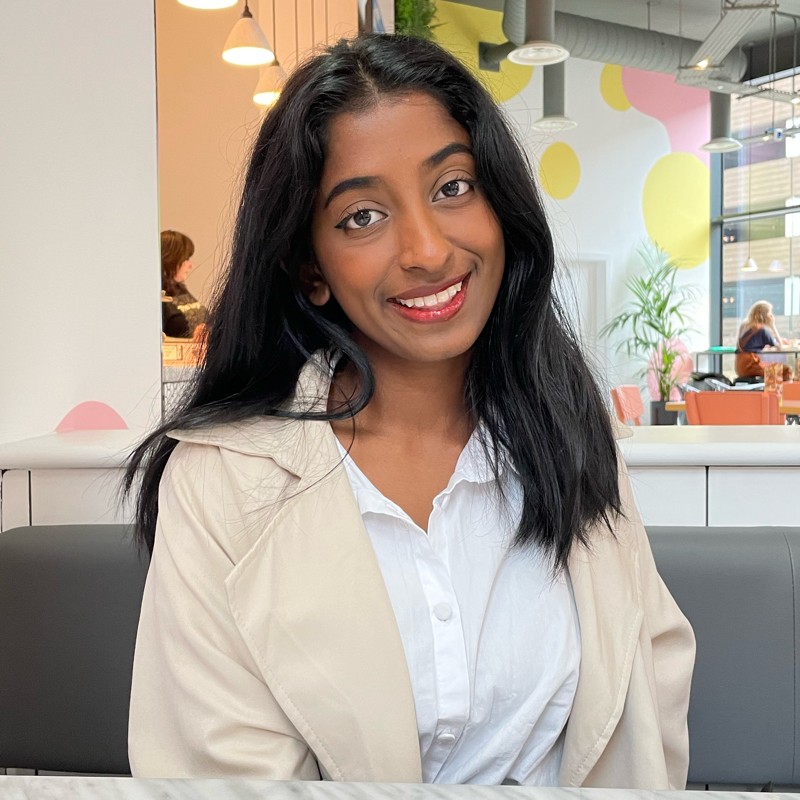


Figure 28.19: Sneha Kandane. Picture reused from linkedin.com/in/sneha-kandane-931346183 with permission, thanks Sneha.
Listen to the episode by clicking Play ▶️ below, or subscribe wherever you get your podcasts, see section 28.2.
28.20 Episode 4: Carmen Faura Práxedes on Disney & McKinsey
Meet Carmen Faura Práxedes, see figure 28.20 and the transcript and show notes in chapter 45
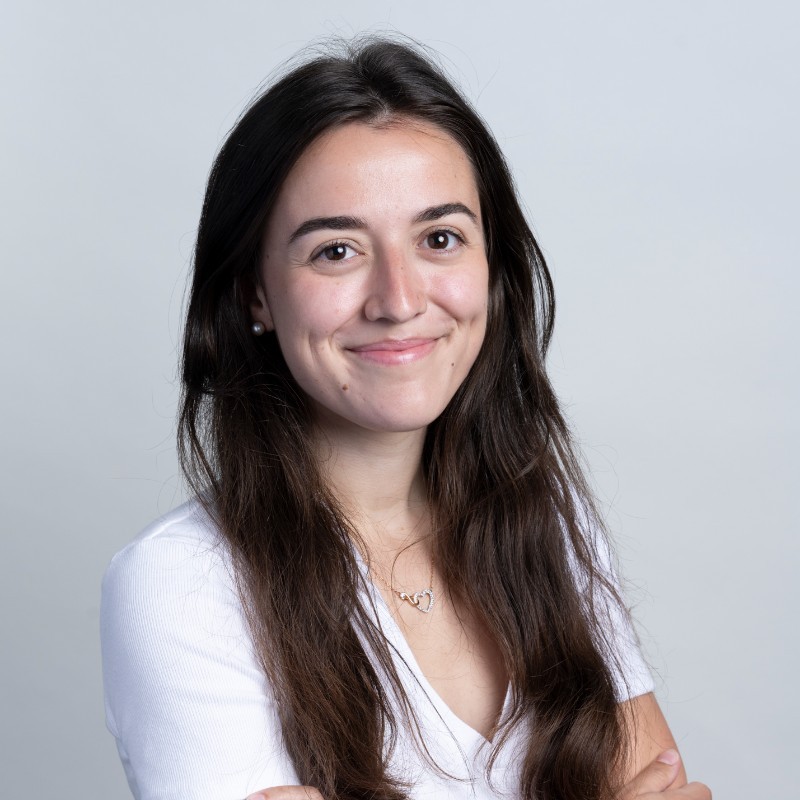


Figure 28.20: Carmen Faura Práxedes. Picture reused from linkedin.com/in/carmen-faura with permission, thanks Carmen.
Listen to the episode by clicking Play ▶️ below, or subscribe wherever you get your podcasts, see section 28.2.
28.21 Episode 3: Brian Yim Tam on Disney+ and Wise
Meet Brian Yim Tam, see figure 28.21 and the transcript and show notes in chapter 47



Figure 28.21: Brian Yim Tam. Picture reused with permission from linkedin.com/in/byt411, thanks Brian.
Listen to the episode by clicking Play ▶️ below, or subscribe wherever you get your podcasts, see section 28.2.
28.22 Episode 2: Jason Ozuzu on Morgan Stanley, Fitbit and Google
Meet Jason Ozuzu, see figure 28.22 and the transcript in chapter 48.



Figure 28.22: Jason Ozuzu. Picture reused with permission from linkedin.com/in/jason-ozuzu-a87049173, thanks Jason.
Listen to the episode by clicking Play ▶️ below, or subscribe wherever you get your podcasts, see section 28.2.
28.23 Episode 1: Raluca Cruceru on Koderly and CERN
Meet Raluca Cruceru, see figure 28.23 and the transcript and show notes in chapter 49
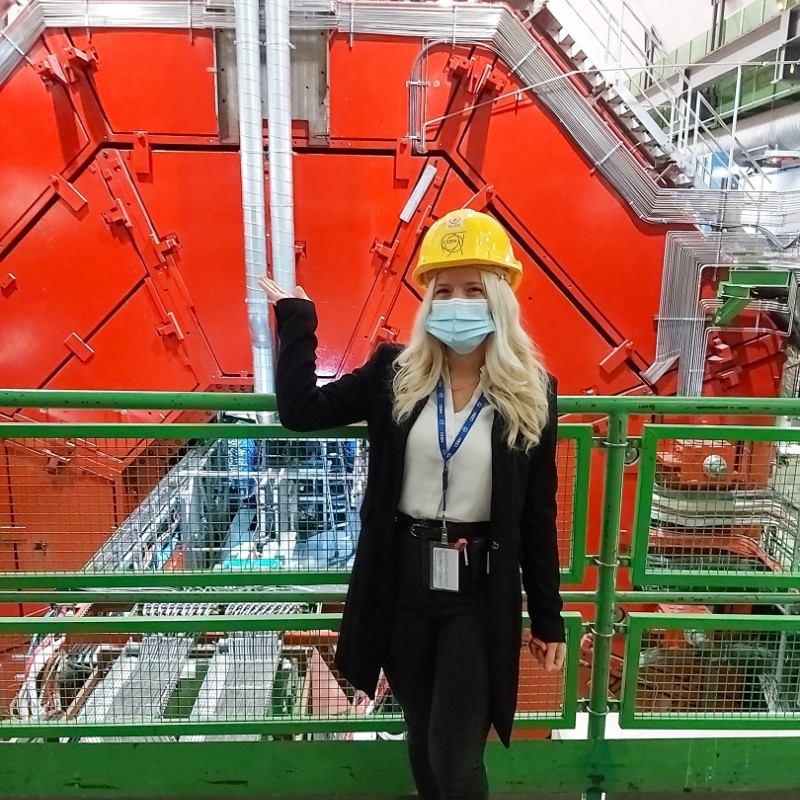


Figure 28.23: Raluca Cruceru is a software engineer at CERN, standing here in front of the experiment she works on: A Large Ion Collider Experiment (ALICE) part of the Large Hadron Collider at CERN, see careers.cern/Raluca. Picture reused with permission from linkedin.com/in/raluca-cruceru, thanks Raluca.
Listen to the episode by clicking Play ▶️ below, or subscribe wherever you get your podcasts, see section 28.2.
28.24 Episode \(x\): it could be YOU!
YOUR FUTURE WANTS YOU: Join your future! If you’d like to be interviewed for the show, get in touch, see figure 28.24. Besides interviewing current graduates, I’m interested in speaking to former graduates, especially if you:
- completed a placement or internship(s) as an undergraduate or postgraduate
- consider yourself to be part of a minority or under-represented group
I’m also interested in speaking to people who graduated a while back, not just this years graduates, but any back to 1968. 🎓 (Brackenbury 2005)
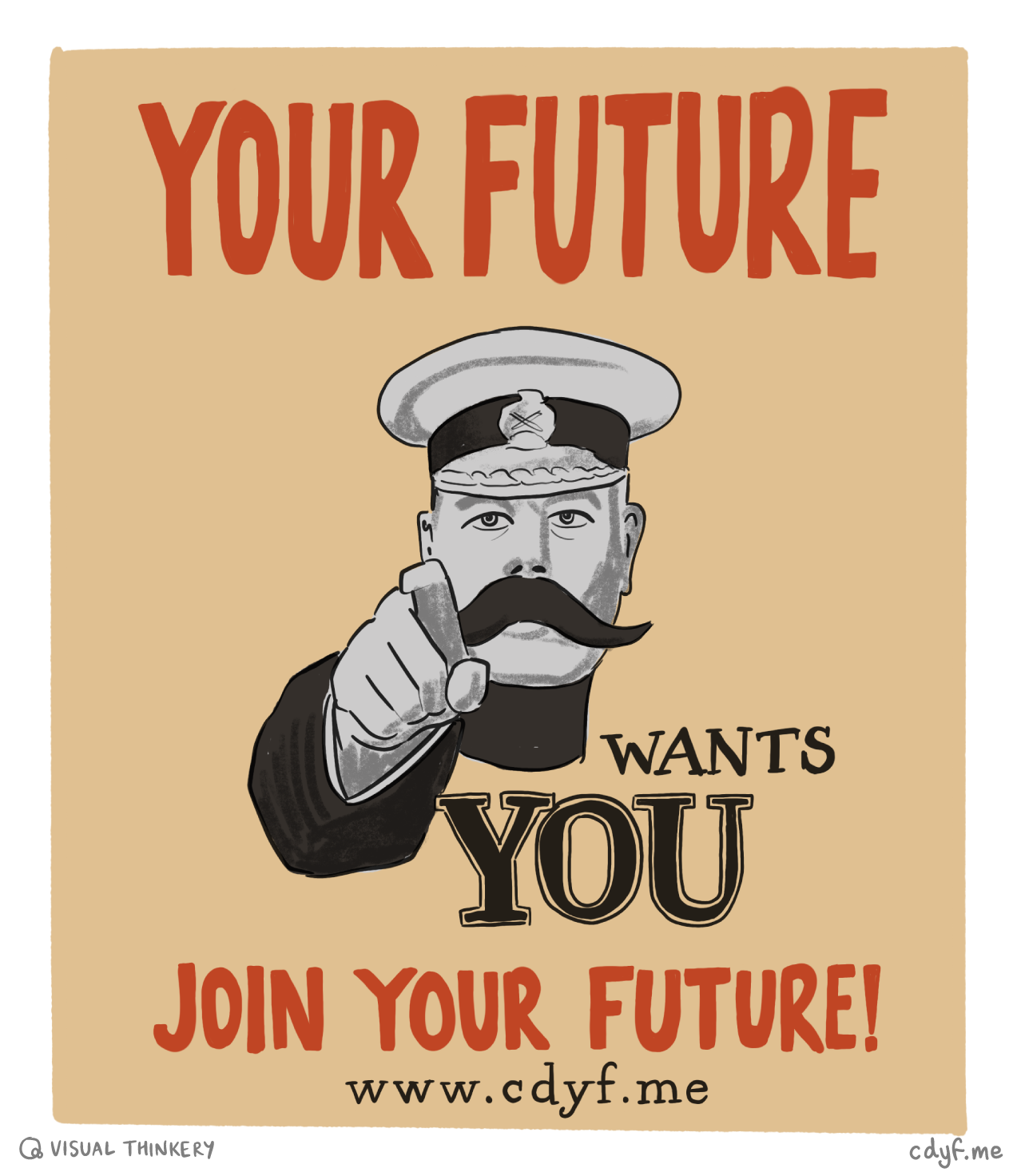
Figure 28.24: Your Country Future Wants YOU. 🫵 Join your future. If you are a former student of Computer Science who’d like to appear on the show, get in touch. I’m especially interested to hear from students who did internships or placements before they graduated in Computer Science. Your Future Needs You sketch by Visual Thinkery is licensed under CC-BY-ND inspired by an original public domain image of the Lord Kitchener Wants You poster by Alfred Leete on Wikimedia Commons at w.wiki/3xvX
If you’re coming on the show, please have a think about the following questions which we ask all our guests:
- 🎸 What’s your story, coding glory see section 28.24.1
- ✊🏽 Minority report (optional) see section 28.24.2
- 👑 You are the next Vice Chancellor (optional) see section 28.24.3
- 🍿 One tune, one podcast, one book, one film: see section 28.24.4
- ⏱ Time traveller, see section 28.24.5
28.24.1 What’s your story, coding glory?
“All your dreams are made, when you’re chained to the tracker and the software trade… What’s your story, coding glory?”
What’s your origin story, see figure 28.25?
- What’s your name and how did you get here?
- Do you remember your first exposure to computing? Why did you choose to study computer science?
- Which organisation were you employed by, why and how did you choose them
- What were the main obstacles you faced finding employment and how did you overcome them?
- Tell us about your roles and responsibilities within the organisation
- How did you find the job and what other jobs did they look for?
- What were the main things you learned on placement?
- What was the most enjoyable or rewarding part of working for your employer?
- What did you do for your final year project?
- If you graduated previously, what has been your career path to date?
- What comes next?

Figure 28.25: (What’s your Story) Morning Coding Glory? (Gallagher 1995). CC BY portrait of Noel Gallagher by alterna2.com on Wikimedia Commons w.wiki/3bimy adapted using the Wikipedia app
So what’s your story, coding glory? 🎸
28.24.2 Minority report
This is an optional question taken from the title of the Philip K. Dick novel The Minority Report and subsequent film adaptation, see figure 28.26. Minority report asks our guests:
- Do you consider yourself to be a member of an under-represented, minority or otherwise marginalised group?
- If so which one(s) are you happy to discuss, see section 2.2.1?
- What has your experience been of being in a minority at University and in the workplace?
- How can the teaching and learning of computer science be made more equitable, diverse and inclusive for members of your minority group(s)?
- What else can universities do to make campuses more welcoming to members of your minority group(s)?
- What more can employers do to make workplaces more welcoming to members of your minority group(s)?
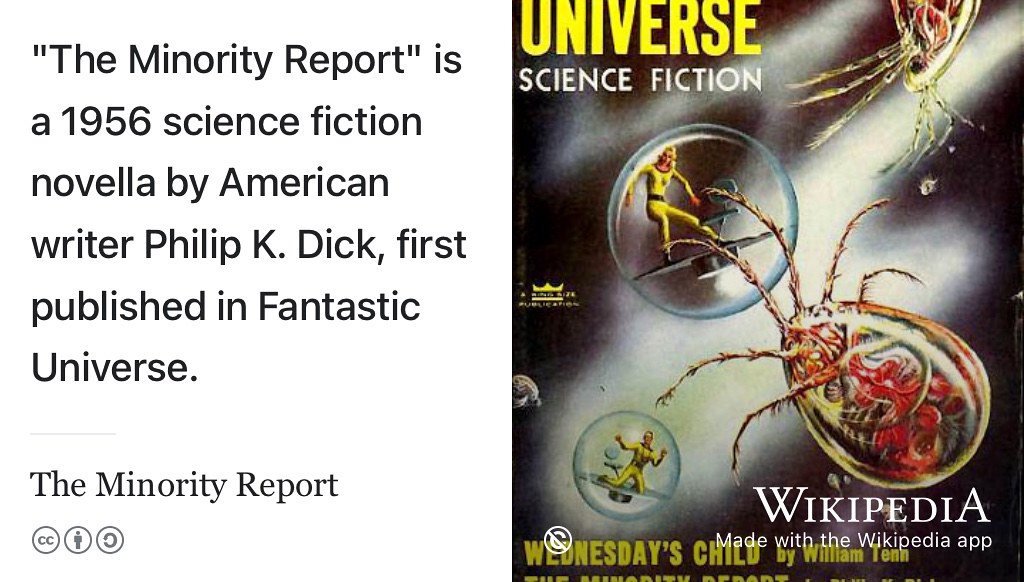
Figure 28.26: Are you in a minority? Inspired by the book (Dick 1956) and its film adaptation (Spielberg 2002), we’ll hear from some of our minorities. The Minority Report is short story by Philip K. Dick first published by Fantastic Universe magazine in 1956. What is it like being in a minority and how could universities and employers be more welcoming to your minority group(s)? Public domain image of magazine cover by Ed Emshwiller via Wikimedia Commons w.wiki/5Swn adapted using the Wikipedia app
If you’re in a minority that you’re happy to talk about, do you have anything you’d like to report? ✊🏽
28.24.3 You are the next Vice Chancellor
This is a thought experiment. Imagine that the board of governors and senate of the University of Manchester had appointed you, instead of Duncan Ivison, see figure 28.27. As VC, you now have responsibility for:
- ~11,000 staff
- ~46,000 students
- ~500,000 alumni around the globe
You’ll also take over as chair of the russellgroup.ac.uk. Since this is an optional question, you can dodge this bullet if you’d rather not attempt to answer it.
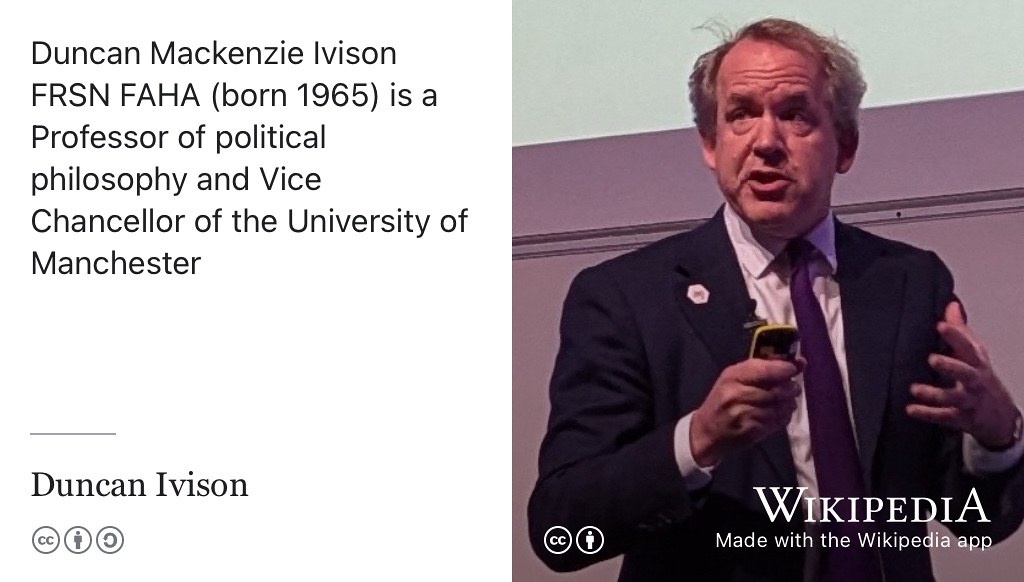
Figure 28.27: Professor Duncan Ivison has served as Vice Chancellor (VC) of the University of Manchester since 2024. If you were VC, what would you change about how teaching at the University? CC BY portrait of Duncan Ivison on Wikimedia Commons w.wiki/DVD8 adapted using the Wikipedia app
So if you were Vice Chancellor, what would you change about the University of Manchester (and Universities generally) to improve the teaching and learning? What would be your first task to make a difference to students like yourself? How would we know when we’d made a significant difference to what people learn?
28.24.4 One tune, one podcast, one book and one film
We love our books, music, films and podcasts. This love is expressed in gratuitous popular culture references throughout Coding your Future. Critics say the musical playlists in chapter 22 are clogged up with:
- Lancashire boy bands, see section 22.3
- BritPop and Dad-Rock, see section 22.4 (Mitchum 2019)
- Cardigan-swinging, shoe-gazing, Glastonbury-gigging, indie music, see section 22.5
- Music made with digital computers rather than analogue instruments, see section 22.2
- other antiquities from a bygone era, see figure 28.28.
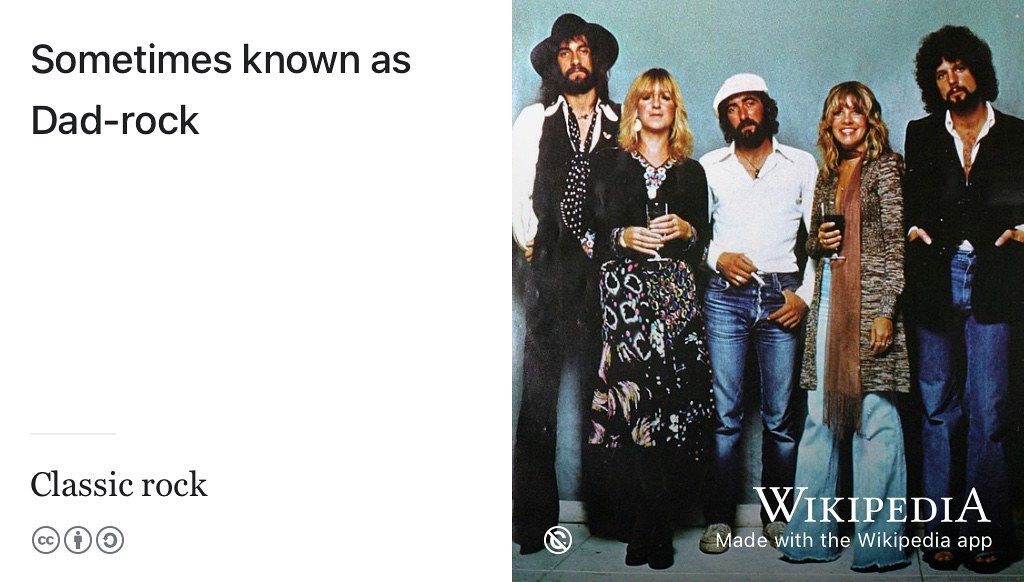
Figure 28.28: From the Beatles to the Rolling Stones, U2 to Fleetwood Mac, Oasis to Guns N’ Roses and Jimi Hendrix to Queen: the Dad-rock playlist shamelessly revels in classic but bygone glories of yesteryear. (Mitchum 2019; J. Rogers 2008) Public domain portrait of Mick Fleetwood, Christine McVie, John McVie, Stevie Nicks and Lindsey Buckingham (Fleetwood Mac) on Wikimedia Commons w.wiki/6hxg adapted using the Wikipedia app
So, can you recommend a:
-
TUNE! One tune to rejuvenate or internationlise our playlists. Why is it important to you?
- Perhaps it makes you relax, feel happy or comforted?
- Maybe it reminds you of special people, a special time or special place in your life?
- We’ll add it to The Coder’s Playlist in section 22.1
- PODCAST: One podcast you’ve enjoyed that you’d recommend people listen or subscribe to 🎧
- BOOK: One book (or audiobook) you’ve enjoyed, either fiction or non-fiction 📕
- FILM: One film we’ve got to go and watch right now, old or new 🍿
28.24.5 Time traveller
Do you wish that you knew what you know now, when you were younger? Just like Ronnie Lane, Ronnie Wood and Rod Stewart, we all probably feel that way sometimes, see figure 28.29. So, if you could travel back in time to meet the younger you, just starting University:
- What would you tell your former self, now that you are older and wiser?
- What would you tell current students to help them get the most of their preciously short time at University?
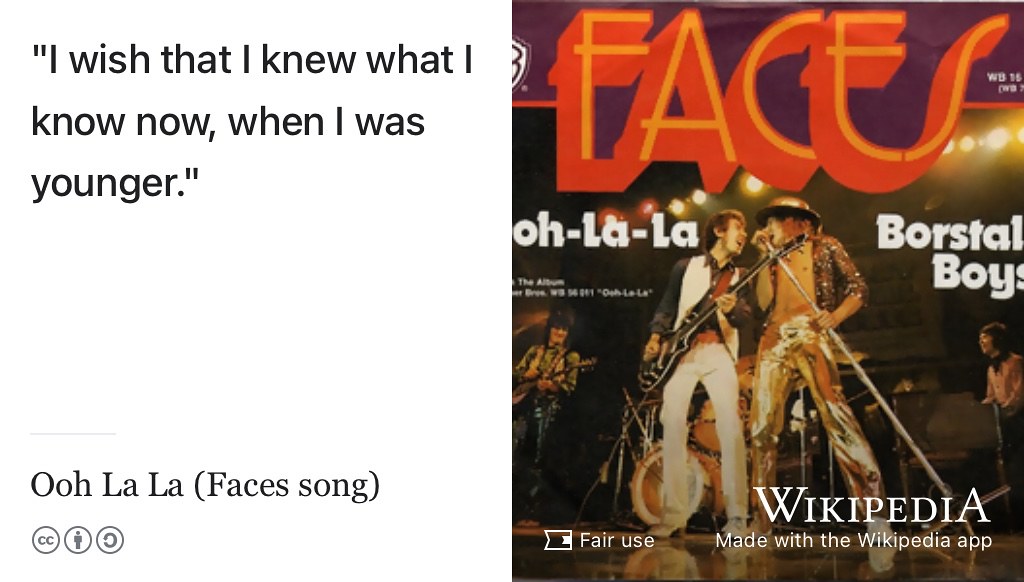
Figure 28.29: Poor old grandad I laughed at all his words but I wish that I knew what I know now, when I was younger, see Ooh La La. (Lane and Wood 1973) Do you wish that you knew what you know now, when you were younger? What would you tell your younger self about getting the most from University life?
What conversations would you have with your younger self? What have you learned? Is there anything you know now, that you wish you’d known when you were younger? See figure 28.30.
Figure 28.30: What advice would graduating students offer their first year self? What advice would you offer your first year self and any first year student? 🎓
28.25 Everything I had to know, I heard it on my radio
Let’s leave the last words on podcasting to The Buggles and Queen. Podcasting is an evolution and mutation of radio but did video kill the radio star? (Downes, Horn, and Woolley 1979) What if everything you had to know, you could hear it on your radio, see figure 28.31? Tune in to find out. 📻
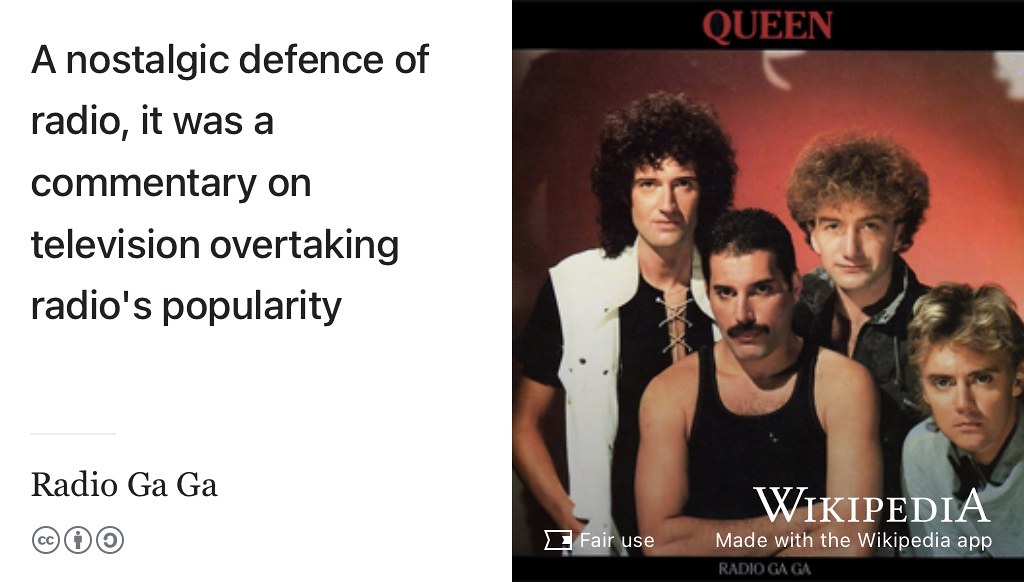
Figure 28.31: All we hear is Radio Ga Ga but everything I had to know, I heard it on my radio. So don’t become some background noise, a backdrop to the girls and boys, who just don’t know and just don’t care and just complain when you’re not there. Radio. (R. Taylor 1984)
I’d sit alone and watch your light, my only friend through teenage nights. Everything I had to know I heard it on my radio. (R. Taylor 1984)
28.26 Summarising your hearing
Too long, didn’t read (TL;DR)? Here’s a summary:
Your future is bright, your future needs listening. Listening to your future, will help you code your future.
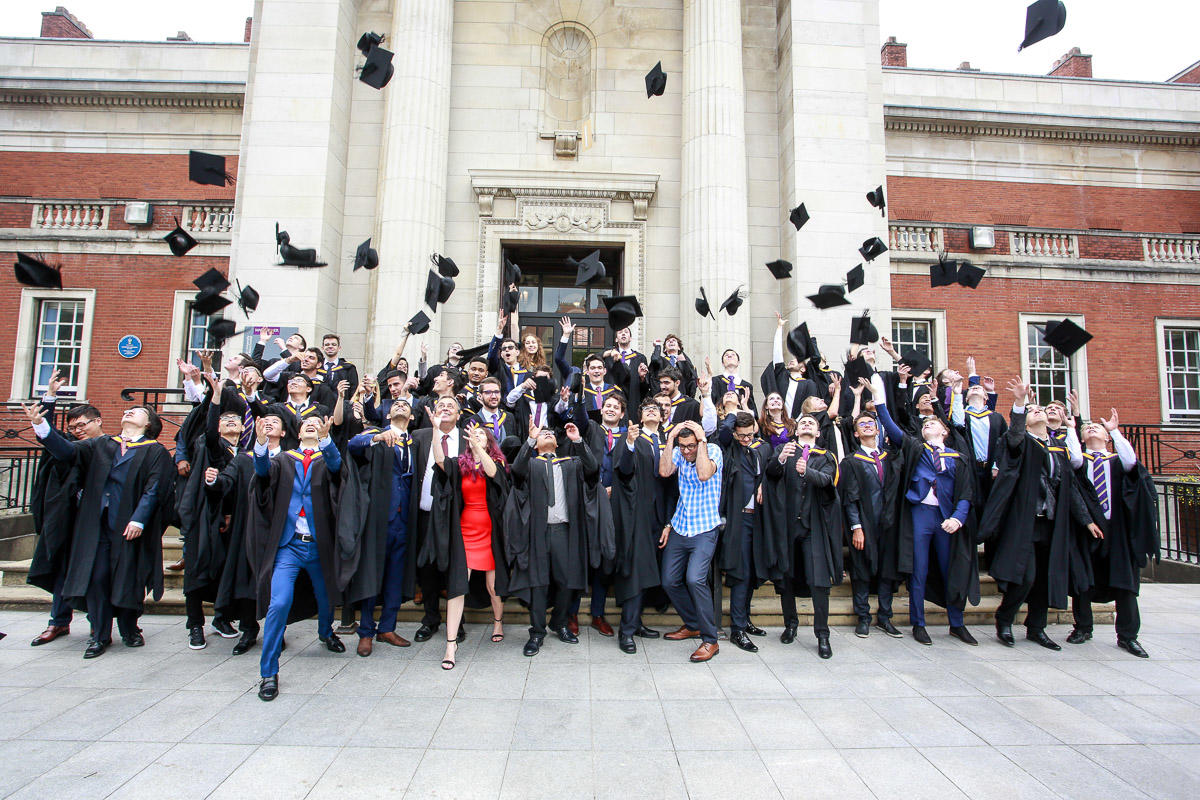
Figure 28.32: Silly hat? ✅ Silly frock? ✅ Wearing your best outfit? ✅ It must be time for graduation! What comes next? Hearing your future interviews current and former students to find out more about how they got to where they are and where they are going to next. Picture of obligatory hat throwing outside the Samuel Alexander building in 2018. Photobombing by Gavin Brown 🎓
In Hearing your Future, you can listen to students about how they are Coding their Future. We hope you’ll be inspired and encouraged by their stories to help you on your journey.
28.26.1 Thanks Jez
This podcast is inspired and supported by Jez Lloyd, host, producer, director, editor, sound engineer and mastermind of the excellent CS@Manchester podcast, see figure 28.33. Thanks Jez! 🙏
Figure 28.33: The CS@Manchester podcast was produced and hosted by Jez Lloyd and ran from 2015 to 2020. This podcast, Hearing your future, is following in all 38 of its audible footsteps, see podomatic.com/podcasts/cs-engagement
28.26.2 Thanks BBC Radio
This podcast has also borrowed ideas from the BBC, see figure 28.34. It’s a cross between Desert Island Discs, The Life Scientific and Young Again. (Al-Khalili 2011) Thanks to Jim Al-Khalili, Lauren Laverne, Sue Lawley, Kirsty Young, Michael Parkinson and Roy Plumley for the inspiration. (Plomley et al. 1942; Young 2023)
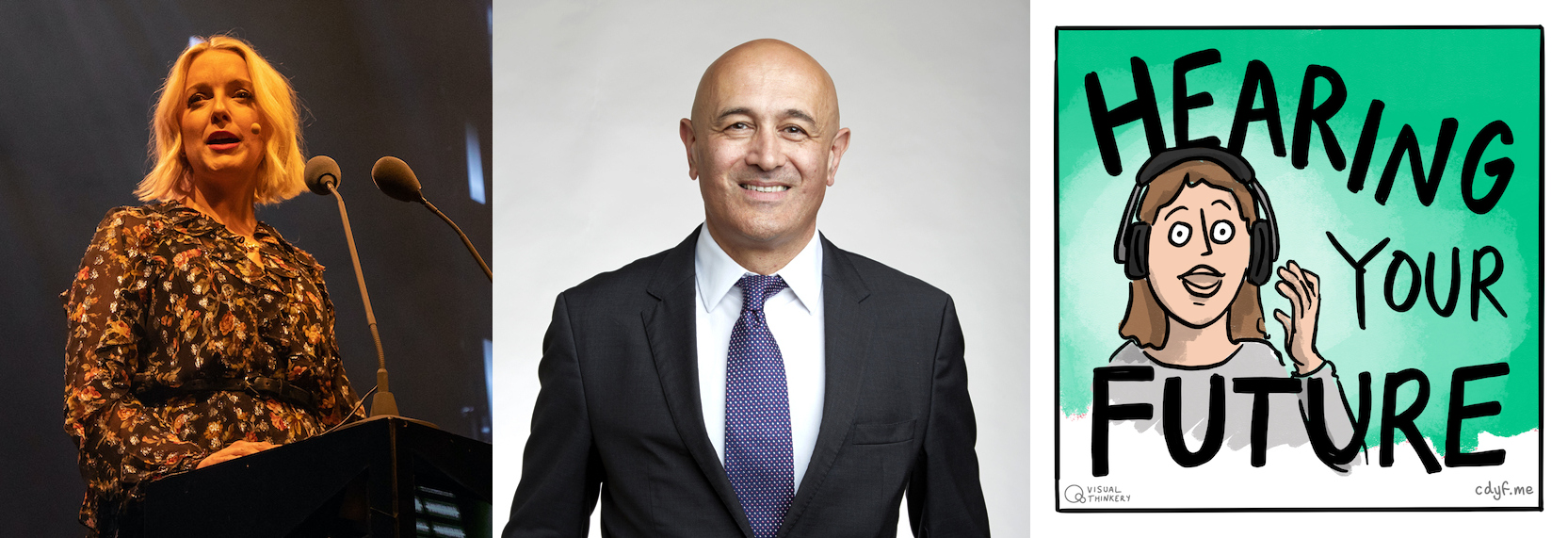
Figure 28.34: Hearing Your Future (right) is a mixture of Desert Island Discs hosted by Lauren Laverne (left) and The Life Scientific hosted by Jim Al-Khalili (middle) and Young Again with Kirsty Young. Subscribe and listen wherever you get your podcasts. CC-BY-SA Portrait of Lauren Laverne by Jwslubbock on Wikimedia Commons w.wiki/6z4z, CC-BY-SA portrait of Jim Al-Khalili by Debbie Rowe at the Royal Society on Wikimedia Commons w.wiki/_w2fh, CC-BY-ND Hearing your Future artwork by Visual Thinkery.
